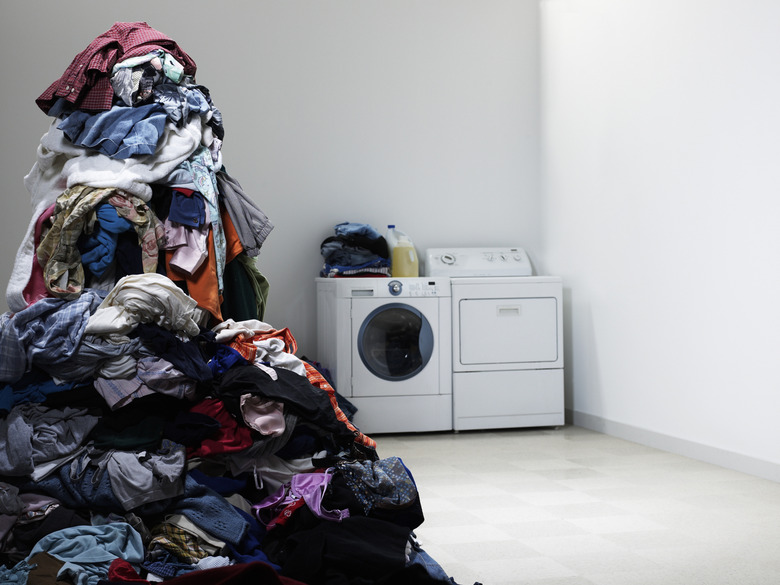Can I Insulate A Dryer Vent Pipe?
Dryer vent pipes should be the last thing on your mind as you go about the important parts of your day. You run the dryer, the clothes come out dry and the air goes ... somewhere. Problems with dryer vents, however, can bring their presence to the forefront, and dealing with them can be easy or hard depending upon how your vent was installed. If the builder failed to insulate your vent, doing so yourself is not only possible but necessary.
Dryer Vent Problems
Dryer Vent Problems
There is a limit to what your dryer can do. Too many bends in the vent or a pipe that is too long hamper your dryer's ability to push the air resulting in lint build up, clogs and dryer failure. Another common problem with vent pipes is condensation. When metal vent pipes aren't insulated, the ambient air cools the metal which condenses the moist air inside the pipe.This condensation can leak through the joints in the pipe and collect in the walls or ceiling, or the water can run all the way back to the dryer and show up as a puddle under the unit. Either way, insulation is a necessary step when installing or repairing the dryer vent pipe, particularly if it passes through a basement or crawl space.
Leaks and What to Do About Them
Leaks and What to Do About Them
Every inch of the metal surface of the dryer vent must be protected in order for the insulation to do its job. If a portion of the pipe remains exposed, the moist air will still condense in that section, run down the pipe and soak your laundry room. If your vent runs through a duct compartment, you can fill the entire compartment with fiberglass insulation, so long as the pipe is completely covered. If you prefer to wrap the pipe, a thinner rolled insulation is better.
Finish the Job
Finish the Job
Attach the insulation with a high quality, reinforced foil duct tape. Standard duct tape can heat up and fail over time, so get the good stuff. Wrap everything, including any pliable sections near the dryer, and secure it with the tape. Finally, caulk around the opening where the pipe vents to the outside to prevent any cool air from sneaking in.
